Park / Nostalgia Vale
-
 29-December 06
29-December 06
- Views 10,407
- Downloads 1,066
- Fans 1
- Comments 49
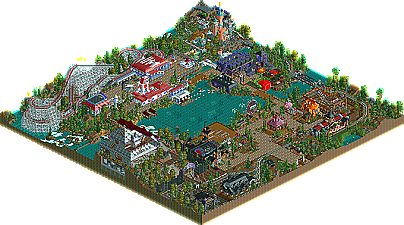
-
 69.00%(required: 60%)
69.00%(required: 60%) Silver
Silver

Liampie 85% RWE 80% Cocoa 75% G Force 75% CoasterCreator9 70% Terry Inferno 70% bigshootergill 65% In:Cities 65% saxman1089 65% Scoop 65% Faas 60% posix 55% 69.00% -
1 fan
 Fans of this park
Fans of this park
-
 Download Park
1,066
Download Park
1,066
-
 Objects
398
Objects
398
-
 Tags
Tags
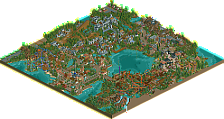
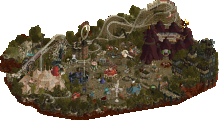
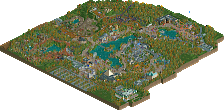
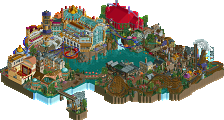
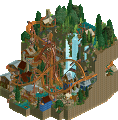

tyandor, you say you researched old woodies but the only thing that shows is that you have flat turns, have you ever seen how fast a train goes on those turns? You say that you want to have a minimum of 40 kmh or whatever and your woodie has one of about 55 or something like that, but if you were being realistic why would you impose your personal standards on what is supposed to have existed in real life, at a time when there were standards of velocity that were much lower than today? Nevermind about the g's on the body, but the track couldn't even support those laterals on those turns for so many years as to still even be standing. I hope you didn't assume that I didn't know old and sometimes even newer woodie's turns were not banked or were very little; laterals have become to be a lost art with cci dispanding and gci taking control of the woodie market. Anyways I thought your woodie was bad because it was pseudo-realistic, the pacing did not match an "old-tyme" woodie at all, and pseudo-anything is just bad. Here's the real deal, albeit an exaggerated example but it shows the point:
http://www.youtube.c...h?v=YwyyloG6ks8
Congrats Canes!
-X-
Watch that Phatage...
I think Tyandor did a pretty good job if comparing it to something like the Grand National, which isn't much less of an old timer than Jack Rabbit...
Edited by ride_exchanger, 31 December 2006 - 01:18 PM.
trav, angular velocity doesn't determine lateral g's, so it doesn't matter how fast you navigate the turn; Traver's racers slow down dramatically at its turns meaning that its tangential velocity, which is what determines its centripetal acceleration, which in turn translates into g's, is a lot slower. at slower speeds, it comes out to that a train can navigate with more angular velocity without exuding too many g's in the lateral direction because centripetal acceleration is related to tangential velocity squared, and the ratio of greater velocities to their respective squares is less than smaller velocities' ratios. in the end, i'm still right and am ready to take anybody else on that has a seemingly legitimate argument
Xcoaster Offline
Anyways, I think Phatage is right, though I had some trouble following a little of what you said. For clarification:
a = centripetal acceleration (directly related to g's, which would be (a)/(gravitational acceleration))
w = angular velocity
v = tangential velocity
r = the radius (in this case, of the turn)
So v=(w){r}
and
a=(v^2)/{r}
thus
a=(w^2){r}
When you said that centripetal acceleration doesn't depend on angular velocity, I was confused, since it does, but I assume what you meant is that with a large enough radius a large tangential velocity doesn't matter much. Which is why with coasters like Grand National, the train can be hauling ass through the turns, but they are such big turns that it doesn't matter. Same reason the switchbacks on a mouse are intense, despite the low speed.
Anyways, I was very impressed with our park this week. The woodie looked very nice (Though it may have been going too fast; I don't care that much. My computer's lag makes up for it). The parade building was easily one of the best buildings this season. I loved the circus area (wooden wild mouse, yay!), the fairy tale ride and the surrounding theming were really good. I really enjoyed the area around the Rocket, and the boat ride across the lake was neat (similar to the one at Europa Park). The main reason I really liked this park was that you weren't afraid to make a more realistic park which contained theming, interesting buildings, and details that weren't boring details. Essentially, it had the atmosphere of a realistic park, but it was still a very fun park to explore.
Great job Ty and Levis. This was a very nice park to finish out the season with.
Here's sort of what I meant, say you have a train that navigates an unbanked turn at pi radians/sec, what does that tell you about centripetal acceleration (g's)? All the omega tells you is the ratio relating the tangental velocity and the radius of the curve, but without knowing at least one of these values you cannot determine g's and therefore it has no determining impact on it.
Oh and sorry about trying to sound unnecessarily complicated, I was just trying to shut any dumbasses up.
the 3 unbanked corners:
turn1
v= 15 m/s
r= 6 m
turn2
v= 15 5/9 m/s
r= 6 m
turn3
v=16 2/3 m/s
r= 9 m
so if we calculate the centripetal accelartion (v² / r) we get the following numbers:
turn1
a= 37,5 m/s²
turn2
a= 40 80/243 m/s²
turn3
a= 30 70/81 m/s²
so if we translate that to G forces (a/g with g=9.81)
we get this:
turn1
3.83 G
turn2
4.11 G
turn3
3.15 G
---
I don't know who was right but this are the numbers.
Now for the coaster itself, originally it was to be longer, but try to make a decent coaster in that small space. I didn't want to sacrifice anymore space to an already somewhat cramped park. I didn't want some kind of childish coaster in it as the one posted by phatage as being the main coaster of the park. It would have been there if it had been a bigger park.
I don't think I did a bad job and that is all that matter to me.
The coaster is somewhat inspired by the Comet in Great Escape (which Steve Franks met a rec track off) and I wanted to have that double turnaround in it.
Anyway, to ride exchanger, I don't mind taking up the defense for me, but Phatage still has a certain regard from me if it concerns coasters.
As for myself I'd rather hear some other feedback on the park, both positive as negative as long as it is constructive (just don't make those freakin' long posts like Ed does
Edited by eman, 01 January 2007 - 12:44 PM.
Corkscrewed Offline
I should retitle this thread: Learn Physics from RCT!
Anyway, I won't agree with Phatage on the realism to such an extreme, because as Ty says, RCT is not consistent with its scaling, so you can't calculate lateral G's and say "oh this isn't right."
That said, going though an essentially unbanked turn at 40 MPH is definitely not realistic for the coasters of old (or heck... any coaster in general, save Traver's sadistic creations). That hurts. Period. Something like 20 is more like it, and I generally would put my unbanked turns between 20 and 25 for a woodie in RCT. It's a good compromise (in my opinion) between real physics and RCT physics, and in my experience, it generally ends up looking the best.
That said, this IS just a game, and if you want to really get realistic, open up 3D Studio Max or Rhino or any 3D modeler you want and make your own theme park all in 3D. THEN we'd probably worship you.
1. show me proof you know the width and length of each tile, if you don't know that, you can't calculate shit.
2. show me proof that classic coasters didn't take any turns at 35mph.
3. show me proof that the g's measured in the game are wrong.
You prove all that Phatage, then you'll have an argument.
1. Uhm ride exchanger, just make a park with only one tile owned, then open up the park details which lists the total surface of the park. After that it's just taking the squareroot of that value.
2. they did, on the Crystal Beach Cyclone (which needed it's own first aid station), but we're talking about flat turns here and taking the m in a relatively small radius.
3. Pretty simple, just build a vertical track with only a twist. RCT will say you won't have any lateral forces, while they'll be there in real-life.
Anyway, I just checked the Collosus in SFMM that came with rct2. The same speeds on the turns as I have on my coaster